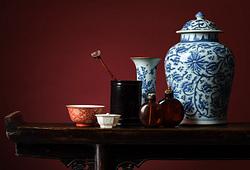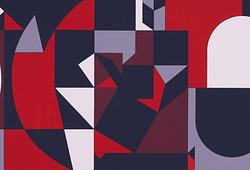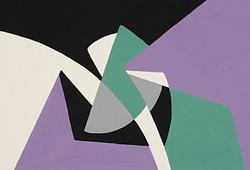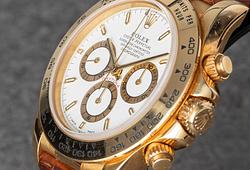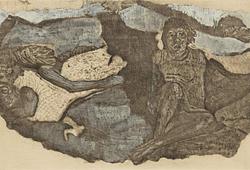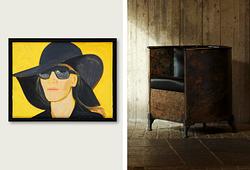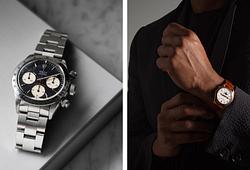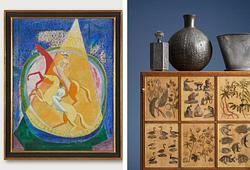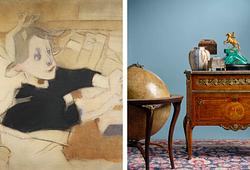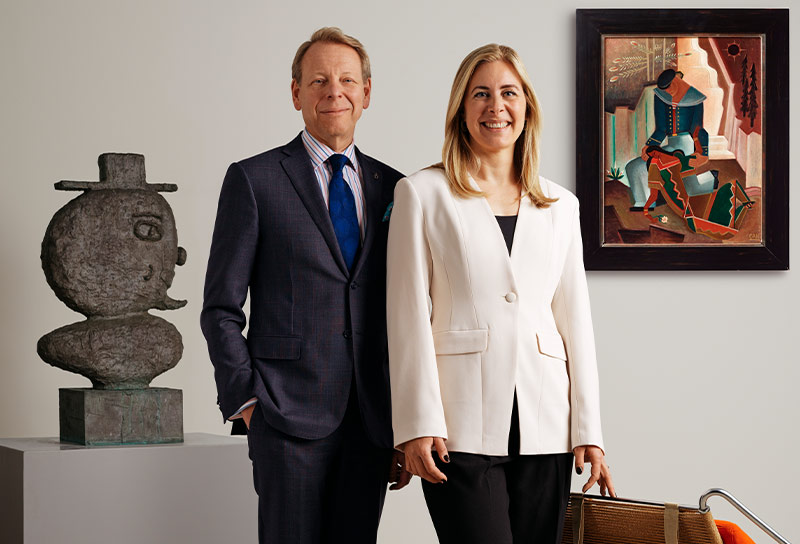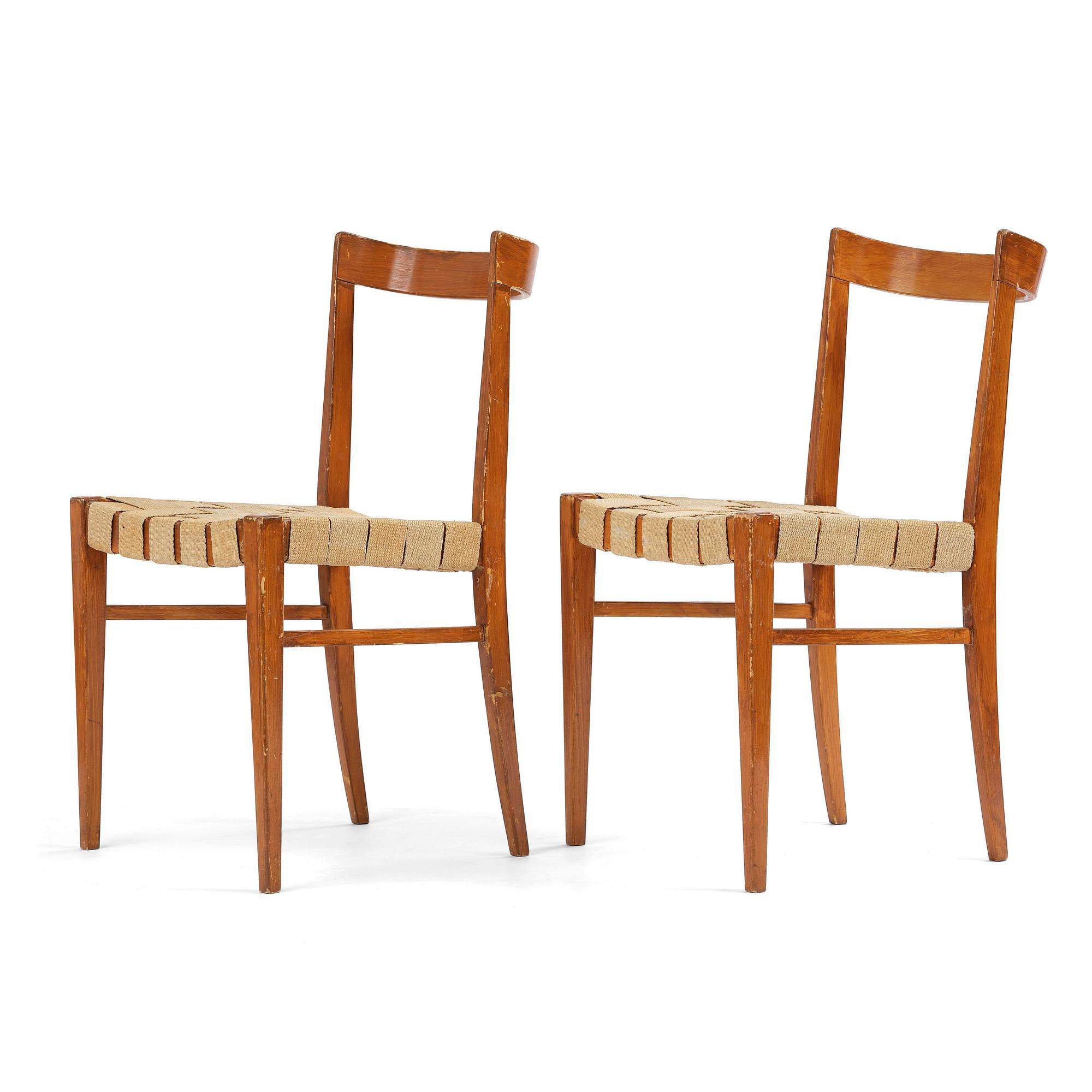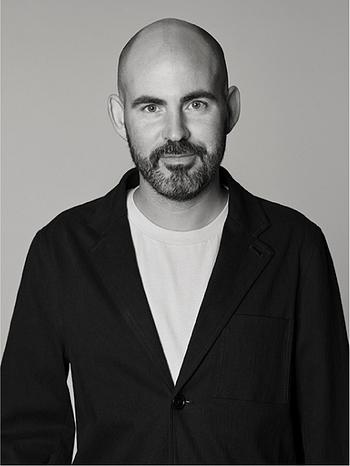Bruno Mathsson
A pair of "BB" chairs, Firma Karl Mathsson, Värnamo, 1930s.
Base in handpainted wood grained birch, seat in braided girths. Seat height 45 cm, height 80 cm.
Renovated, later surface lacquer and girth. One front leg with repair.
Literature
Johan Sjöberg, "Berättelser om småländska designmöbler 1900-1999", People & Stories 2023, pp. 37-38 and 227.
More information
Designed in 1931 for Värnamo hospital.
When a decision was made to expand Värnamo Hospital, Bruno Mathsson saw an opportunity to contribute to the environment with modern furniture. How the dialogue unfolded is unknown. But it ended with Bruno receiving his first order for the women's clinic from the chief physician Gunnar Vidfelt, to design a small, simple, lightweight chair to be placed at the foot of each bed and to serve for nursing. The chair was named BB.
Bruno, who had been following the development of international modernism in furniture design through architecture and design magazines he borrowed from the Röhsska Museum's library, was surely aware that Alvar Aalto was designing the new hospital in Pemar, from the building to the smallest detail like door handles. The hospital's furniture was part of the commission, and it was important that they were easy to clean – to disinfect. Tuberculosis was the scourge of the time. Bruno had seen Axel Larsson's chair with a seat and back of woven saddle strap at the Stockholm Exhibition and studied Aalto's experiments with creating soft forms using laminated wood. He had also followed Marcel Breuer's development of using metal, bending tubes in load-bearing structures, but he decided to proceed with laminated wood.
The hospital's small visitor chair, with its finely curved backrest in solid wood, featured a seat woven from saddle strap. How he then persuaded Vidfelt to also order more comfortable visitor chairs, the future Grasshopper, is not known. But he moved on and worked with a laminated wood frame that supports a seat curve in the shape of a saddle strap hammock. The finishing wooden frame of the backrest has the same shape as the small chair's backrest. The chair was delivered, but the staff, according to legend, were horrified, did not understand his modern design language, and it was long relegated to the attic's storage. When he later became famous in the late 1930s, the chairs were allowed to return.
-Hedvig Hedqvist.
Designer
Bruno Mathsson (1907-1988) is one of Sweden's most prominent furniture designers. Having a father who worked as a master carpenter, Mathsson learned about furniture carpentry at an early age, which he later benefited from in his profession as a designer. The "Grasshopper" chair was the first that Bruno Mathsson designed in 1931 - on behalf of Värnamo hospital. It was made of bent-glued beech with saddle girth upholstery and had an ergonomic shape. However, neither patients nor staff at the infirmary appreciated the chair. Nowadays, the "Grasshopper" is considered a design classic.
A few years later, Mathsson exhibited his furniture at a separate exhibition at the Röhsska Konstslöjdmuseet in Gothenburg, and in 1937 he participated in the Paris World Fair.
Mathsson's furniture is now considered timeless design classics that combine style with comfort. Some of his most famous pieces of furniture are the armchairs "Jetson", which are produced for Dux, "Pernilla 3", and "Karin" and the table "Superellips", designed together with Piet Hein.





